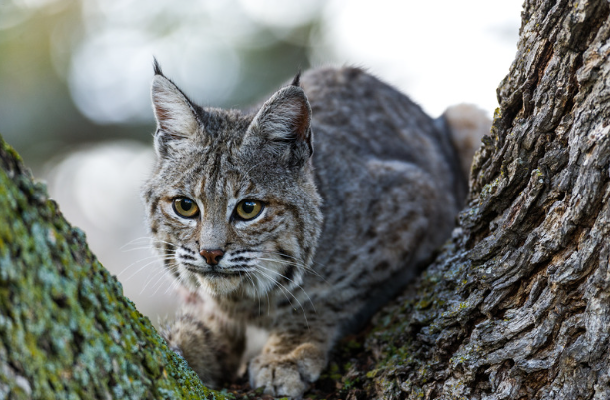Species Highlight: Bobcat (Lynx rufus)
What are the odds of seeing a bobcat in Johnson County? It may be higher than you think.
 The bobcat occurs throughout Kansas, including Johnson, Douglas, and Franklin counties. In fact, according to the Fort Hays State University Mammal Atlas, Franklin and Douglas counties have the highest number of recorded occurrences in the state. If that’s true, then why don’t we see them more often?
The bobcat occurs throughout Kansas, including Johnson, Douglas, and Franklin counties. In fact, according to the Fort Hays State University Mammal Atlas, Franklin and Douglas counties have the highest number of recorded occurrences in the state. If that’s true, then why don’t we see them more often? The answer lies in the bobcat’s secretive nature, its avoidance of open spaces, and its camouflaged appearance. Bobcats prefer the shrubby edges of forests and streams where rocky ledges and ravines offer perfect locations for dens. The home range of an adult bobcat averages two to four miles for females and four to eight miles for males. That’s a lot of terrain to cross while staying hidden from possible predators.
Speaking of predators, bobcats do fall prey to larger mammals such as coyotes, mountain lions, and wolves, but most of the time the biggest threat to survival is food availability. Cottontail rabbits are a staple food source for bobcats. When food is scarce, bobcats turn to rodents and birds. How delicious!
So, the next time you’re out and about, keep your eyes peeled for Kansas’ most elusive wild cat.
Resources: